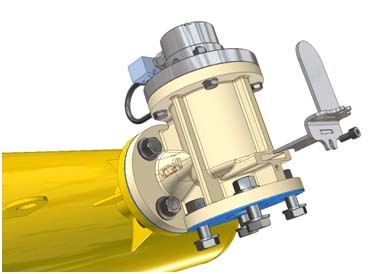News
Val’can.2 air cannon on airlock
Published on 2022-01-26

When it comes to energy saving, we often have the reflex to think of large consumers, structures using a large number of equipment, etc. This is the case with the solution provided by air guns in cement applications. However, Val.i.d. had the opportunity to compare the two versions of its air guns on a specific application and which has demonstrated an indisputable economic advantage. The clogging of crushed limestone in the cells of a rotating airlock required regular dismantling of the rotor for cleaning. The frequency was such that it occurred every 7 hours of operation. The installation of a 25 l Val'can air cannon with a 2'' tapping made it possible to automatically solve the problem and eliminate the constraint and costs associated with dismantling, and avoiding production stoppages. and loss of staff time. The two versions of the Val'can air cannon from the company Val.i.d. are tested at the rate of 1 shot/min: this firing frequency is very high. The Val'can.1 version is a conventional version with the complete emptying of the compressed air tank with each shot. The Val’can.2 version is the version allowing an alternative function with “1 economic shot” or “repetitive shots”: the trigger head in this version is activated in an economic function for the application. Each of the versions proves to be just as effective on the problem. However, the air consumption in the Val'can.2 version compared to the Val'can.1 version is divided by 3 which, given the high firing frequency (60 shots/h for 7 hours of operation in continuous) has a huge advantage. In concrete terms, with the network at 6 bar, the daily air consumption for the equipment drops to 6.3 m3 with the VAL’can.1 version, and to 1.9 m3 with the Val’can.2 version. In conclusion, this demonstrates that with a single Val’can.2 air cannon on a specific application, a substantial energy saving can be achieved and relieve the strain on the compressed air network.
![]()
NUMBER OF COPIES / ISSUE
10 000
![]()
NUMBER OF READERS / ISSUE
30 000
![]()
NUMBER OF ISSUE / YEAR
6

OJD :
CERTIFIED PUBLICATION
BY ACPM
 9 BOULEVARD PIERRE MENDES FRANCE - 77600 BUSSY SAINT GEORGES - Tél. 01 60 94 22 20 - Fax. 01 64 77 51 82
9 BOULEVARD PIERRE MENDES FRANCE - 77600 BUSSY SAINT GEORGES - Tél. 01 60 94 22 20 - Fax. 01 64 77 51 82


